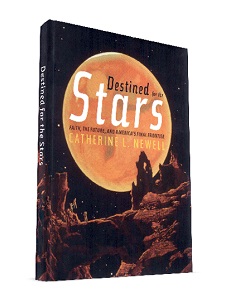Giving your book a title like ‘Destined for the Stars’ is tantamount to a ‘spoiler alert’; we know where this is going, don’t we? The Chesley Bonestell artwork on the cover supports the surmise that this is another historical look at America’s predetermined fate in its transition from exploring Yellowstone to landing men on the Moon. However, the book’s subtitle - “Faith, the Future, and America’s Final Frontier” – and the author’s position as assistant professor of religion and science suggests a somewhat different approach.
In contrast to most space histories, this one argues that the success of the US space programme was “not due to technological or economic superiority but sustained by a culture that had long believed it was called by God to settle new frontiers and prepare for the inevitable end of time and God’s final judgement”. Now, if you grew up marvelling at the size and power of the Saturn V and the audacity of the design of the Apollo concept, this could be quite a culture shock. Was it all simply a manifestation of ‘God’s will’?
We are familiar with the appropriation of religious language in the narrative of space history: the early writers, such as Willy Ley and Arthur Clarke, are often referred to as ‘proselytisers’; we often talk about spacecraft and rocket designers having ‘faith’ in their creations; and space engineering is even recognised as ‘a calling’. But surely this is only by analogy with religion?
According to Newell, it is more than that. She believes that Ley’s ideas about exploring the solar system were “based on his personal sense of the connection between God’s creation and the discoveries of science” and that von Braun’s “faith in the necessity of reaching space” was boosted, after his conversion to Christianity, by a “belief that God intended humanity to leave Earth and settle on the other planets”. This is backed up by 40 pages of chapter notes and index, along with a beautiful colour insert of paintings by Bonestell and Thomas Moran.
It’s a fascinating and well-researched treatise, but many will find the author’s conflation of the collective joy of scientific curiosity and religious fervour a leap-of-faith too far.











